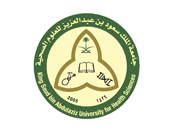Abstract
Over the last forty years, the field of medical education has seen major changes in defining graduate outcome competencies, curriculum design, integration between clinical and basic sciences, teaching approaches, assessment, accreditation, etc. In the domain of learning approaches, problem-based learning (PBL) gained popularity particularly with the rapidly increasing new medical colleges all over the world.1 Other learning and teaching strategies also began to appear in an attempt to induce more student-centered learning, more student engagement, and active learning. Some of these strategies such as team-based learning (TBL) were attempts to improve teaching in a conventional curriculum, while maintaining the large number of students in the classroom, the subject-based courses, and the subject-matter expert as the “teacher in control.”2 In TBL, students prepare before coming to the class, work in small groups, learn from each other, and actively construct their knowledge. The new buzz term for it, the “flipped classroom,” can be seen to spread in all kinds of higher education. The family of “learnings” has at present several members, active and healthy. PBL, TBL, task-based learning3 and case-based learning.4 Medical schools tend to relate themselves to one of the members of this family as its primary strategy of instruction and try to distance themselves on paper from the dominant method of teaching: the lecture. Sometimes, medical colleges use the term “hybrid” when describing their teaching strategy as if giving a lecture is a sign of poor education. In this issue, the paper of Henk Schmidt “On the use and misuse of lectures in higher education” provides the best available evidence on how this common teaching method can be used in ways that nobody needs to feel ashamed of. Regardless of the flag under which the curriculum sails, important is always to find out which teaching strategy fits most to achieve particular curriculum outcomes. This analysis usually leads to the application of a variety of approaches which in my view, when blended, lead to authentic learning. An example from the Eastern-Mediterranean region is the way the College of Medicine, University of Sharjah, United Arab Emirates, approaches the issue. This College uses PBL as its main learning strategy, provides students with resource sessions—or lectures—delivered as TBL, and apply task-based learning to integrate basic medical sciences with its applications in the clinical environment. I believe that more experience will be gained from using blended teaching and learning strategies. In such approach intended outcomes will guide the selection of the best fit. Educational tools are all means and not ends.
Recommended Citation
Hamdy, Hossam
(2015)
"One Size Does Not Fit All: Blended Learning Strategies in Medical Education,"
Health Professions Education: Vol. 1:
Iss.
1, Article 10.
DOI: 10.1016/j.hpe.2015.11.007
Available at:
https://hpe.researchcommons.org/journal/vol1/iss1/10



